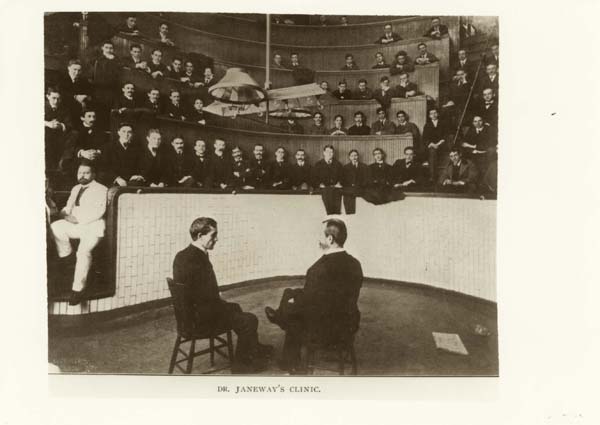
Commentary by Anjali Grover MD, PGY-2Â
Please also see the clinical vignette presented before December 17th’s grand rounds.
Catecholaminergic polymorphic ventricular tachycardia (CPVT) is classified as an inherited disorder which manifests itself as an adrenergically driven polymorphic ventricular tachyarrythmias. The molecular etiology of this arrythmogenic disorder stems from a disruption in the calcium channels found in the sarcoplasmic reticulum.  This type of arrhythmia is an important cause of syncope and sudden cardiac death in those individuals with structurally normal hearts. Genetic studies have elucidated two variants of the disease: an autosomal dominant variant with mutations in the cardiac ryanodine receptor (RyR2), and a recessive variant with mutations calsequestrin gene (CASQ2).Â
           This disease clinically presents usually as a bi-directional polymorphic ventricular tachycardia induced by exercise or any events activating the sympathetic nervous system inducing a catecholaminergic state. It is often seen as sudden syncope during physical activity or acute emotional stress. Given this, the diagnosis can be made during an exercise stress test. The resting EKG is usually normal, but during exercise, premature ventricular contractions that occur serve as a substrate for further development and propagation of bi-directional ventricular tachycardia. This being said, beta blockers are the appropriate medical therapy for this adrenergically driven arrhythmia.
           The current hypothesis on the molecular abnormalities leading to arrythmias in CPVT patients is centered around two well studied mutations. The first being that of the ryanodine receptor-a modulator of intracellular calcium through the sarcoplasmic reticulum. Under normal physiologic conditions, the ryanodine receptor, located in the membrane of the sarcoplasmic reticulum, allows the release of calcium from the sarcoplasmic reticulum in the cytoplasm of the cell, allowing for cardiac muscle contraction.
           However, with the RyR2 gene mutation, in high-adrenergic states, the normally regulated intracellular calcium channels leak out calcium, leading to a depolarizing current and subsequently higher rates ventricular arrythmias. Calsequestrin (CASQ2) is another protein involved in the regulation of intracellular calcium. It is a calcium binding protein located within the sarcoplasmic reticulum, whose role is to essentially increase the storage of calcium in the cell. A mutation in the CASQ2 gene leads to a decrease in the calcium binding capacity and the resulting build-up of calcium, in the presence of a high adrenergic state is thought to contribute to the ventricular arrythmias. In sum, these proteins are responsible for the management of intracellular calcium, and these mutations alter the normal release of calcium from the sarcoplasmic reticulum, thus electrophysiologically predisposing cells to degenerate into a ventricular arrhythmia.
